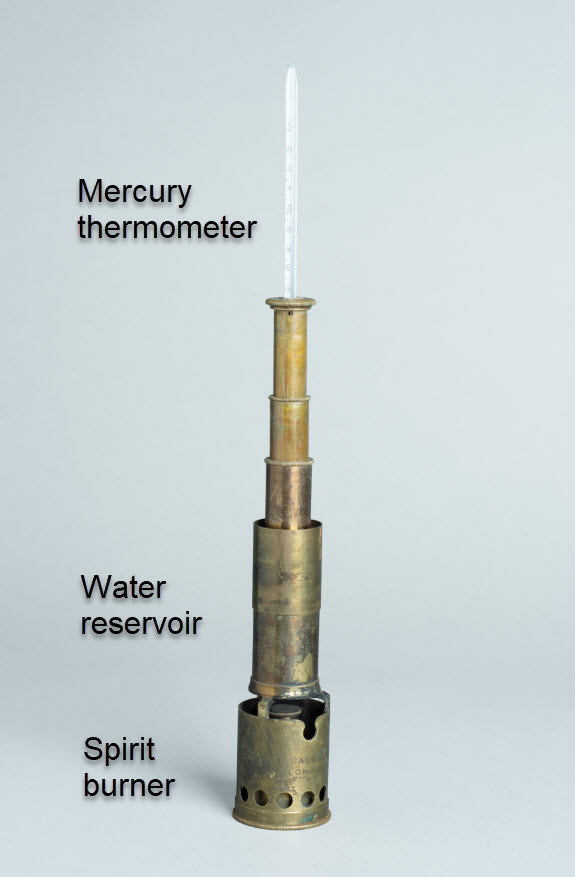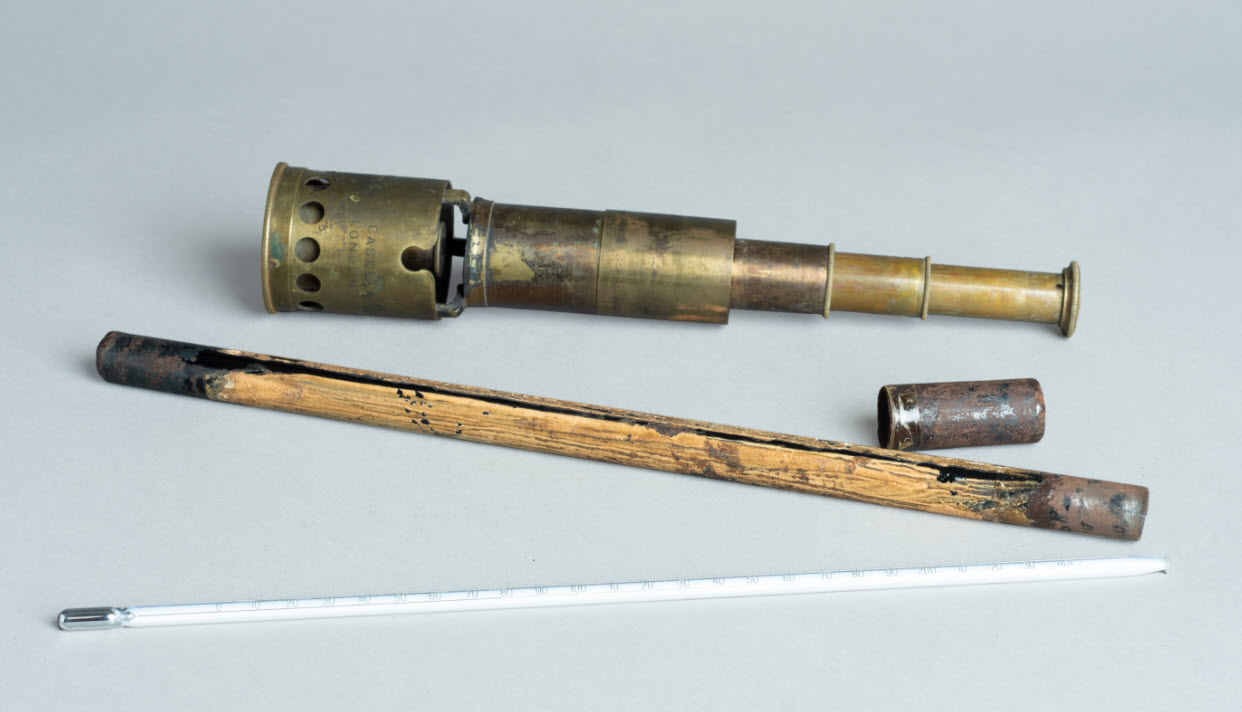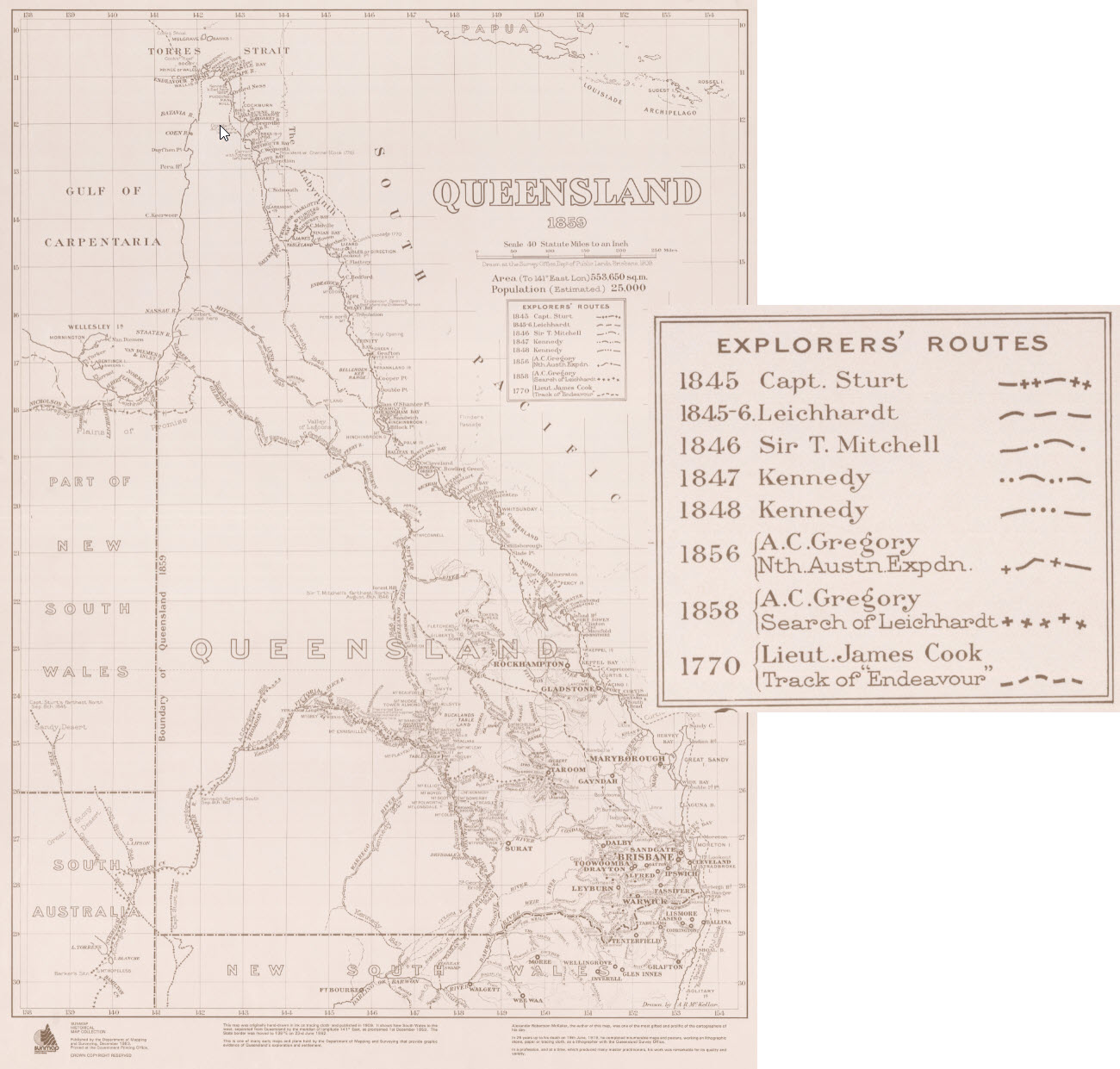Measuring height
Pressure hypsometer
The pressure hypsometer was used by early explorers in Queensland, such as Ludwig Leichhardt, to help determine approximate heights of features. Dr Livingstone also used a pressure hypsometer on his travels in Africa in the mid-1800s.
Developed in the 19th century to assist cartographers and surveyors in the field, the pressure hypsometer worked on the principle that pure water boils at different temperatures for different altitudes. For example, the higher you go up a mountain, the lower the boiling point due to the changing atmospheric pressure.
It was made of brass and had a number of independent parts:
- There was a space at the bottom for a small spirit burner to heat water.
- Above this was a water reservoir
- Next were cylindrical chambers wide enough to hold a mercury thermometer that read the temperature of the steam. Its bulb was placed about 2cm to 3cm above the surface of the water.

Pressure hypsometer on display at Museum of Lands, Mapping and Surveying

Components including case for thermometer
The height of a location could be determined by noting the temperature at which pure water boiled, then comparing this with a set of pre-defined tables that provided the approximate height for this temperature.
An example of the pre-defined tables can be found in Arnold Guyot’s A collection of meteorological tables with other tables useful in practical meteorology, 1852.
It was a valuable resource because of its small size—15cm in its closed form—which made it easy to transport.
This map of Queensland shows the routes taken by early explorers.

Related links
- Learn about Queensland’s surveying history.
- View images of instruments and equipment used to survey and map Queensland.


